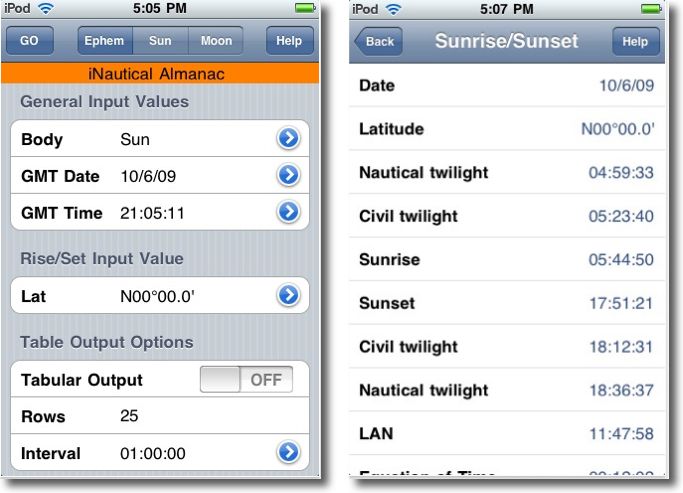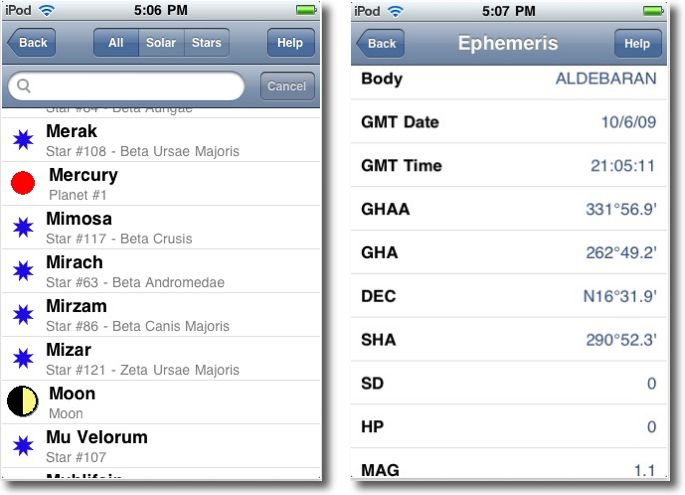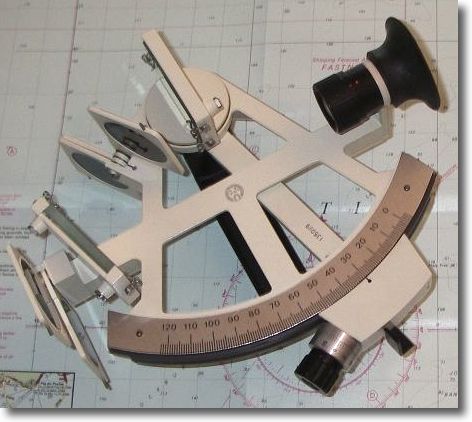 Yachtmen my friends, for the few of you who, like me, does not completely sacrifice the traditional navigation to electronics, enjoy ! I have dreamed about it for a while, for only 12 EUR Luis Soltero did it :
Yachtmen my friends, for the few of you who, like me, does not completely sacrifice the traditional navigation to electronics, enjoy ! I have dreamed about it for a while, for only 12 EUR Luis Soltero did it :
iNA scans all ephemeris data available in the pages of the daily USNO Nautical Almanac, until the year 2800, we have time to see ! Essential information for determining the position by celestial navigation, there is no need for internet connection, all data is contained in the application.
The program provides the astronomical data for the sun, moon, 5 planets and 173 stars. iNA also provides useful information not included in the Nautical Almanac as the ephemeris of Mercury, bearings sunrises and sunsets (amplitudes), and GHA Aries halfway between civil and nautical twilight for planning stars.
User manual : as simple as accurate
Computation mode is selected using the buttons centered in the upper bar of the app. The options are :
- Ephem : Including ephemeris calculations GMT, GHAA, GHA, SHA, DEC, semi-diameter, Horizontal Parallax and magnitude.
- Sun : Sunrises and sunsets times, hours of twilights, LAN, EQT, Hc sun, and amplitudes.
- Moon : Moonrises and moonsets times, phases and age of the moon.
After selecting the computation mode, the observational data must be entered using the data fields. Un tap sur « Body » ouvre la table de sélection des corps célestes, limited to the previous choice.
- All : Opens the list of 173 stars, 5 planets, the sun and moon.
- ASolar : Only bodies in the solar system are listed : planets, moon, sun.
- AStars : List of 57 stars are most useful for navigation and Polaris.
A search field, in the selection table, allows find a specific star, by primary name, alternate name or star number (i.e.. : ACAMAR, 7, or Theta Eridani show the same star).
- GMT Date and Time : The date and time only to be used in computations of ephemeris.
- Lat : The latitude used only for sunrise/sunset and moon computations.
- Tabular Output : OFF, iNA does the requested computation displaying concise answers for the given GMT time and date. . Set to ON, date is displayed in tables containing the number of (Rows) spécifiées dans le champ « Rows ». The data is then split into separate tables due to the limited size of the screen of the iPhone, scroll down to view additional tables.
- Rows : Set the number of data rows displayed per table.
- Interval : Used only for ephemeris computations, it specifies the time difference between the data of each row in the result table.
Once computation mode selected and data entered, le bouton « GO » lance le calcul et affiche les résultats.
This is an excellent complement to the application Sky Voyager I mentioned in a previous post (*).
What for ?
Take up your old sextant that takes the dust in the bottom of a locker. Proceed some meridian calculations and some lines of position. Check your positions plotted on the map and compare it to the point provided by GPS. When you have no more than 1 at 2 nautical mile gap between these two, vous pourrez alors dire que votre GPS est fiable 🙂
… and especially you no longer fear it fails !




